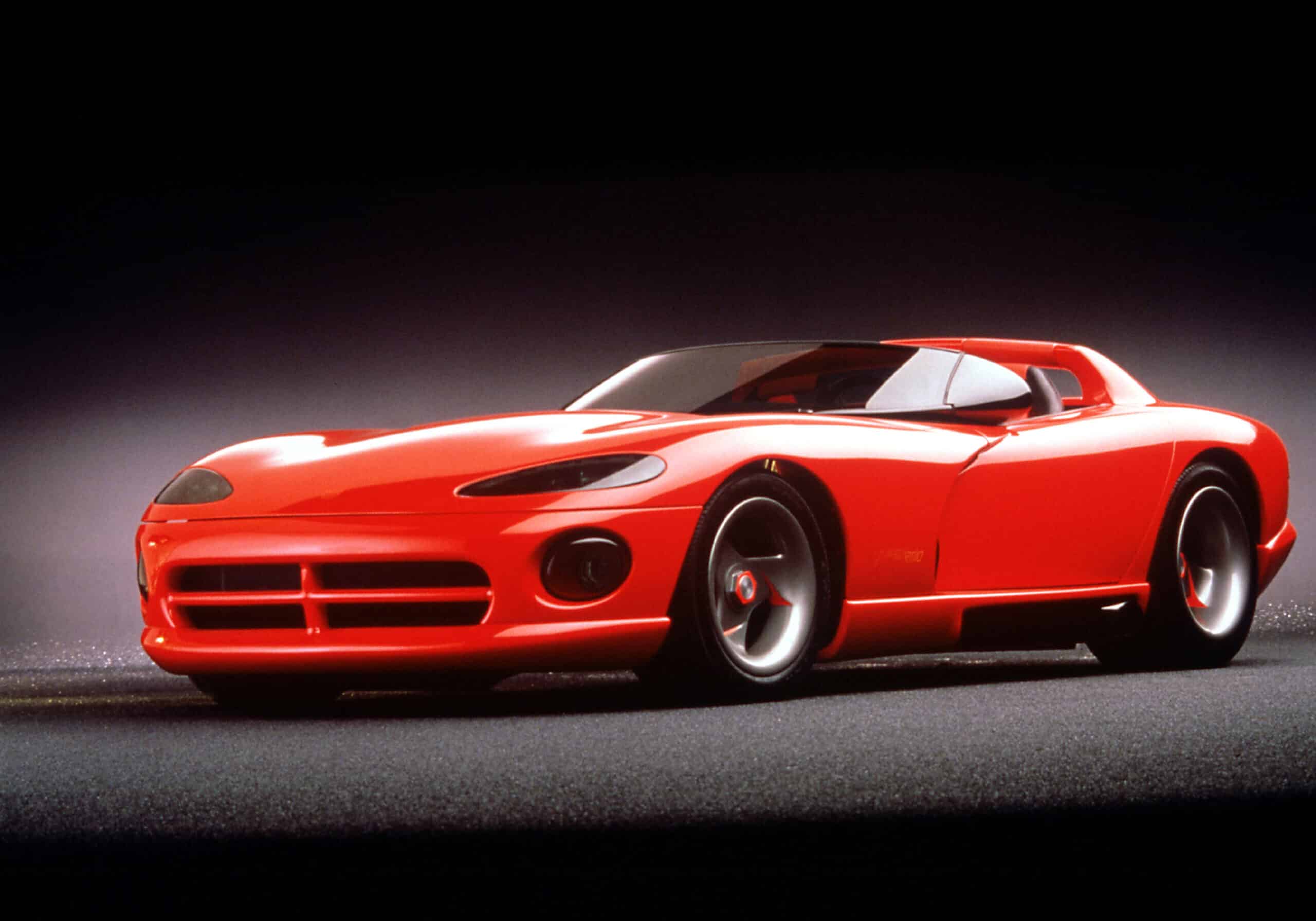The American sports car market was always dominated by Chevrolet’s Corvette. However, in 1992 a brand new and incredibly aggressive, cool-looking, and fast car erupted on the scene, creating a sensation and raising the standards. All of a sudden, there was a bona fide sports car with supercar performance and a fantastic V10 engine providing its owners with excitement not seen since the days of Shelby Cobra. In fact, it is interesting that we are mentioning Shelby Cobra since this exact car was the inspiration for its modern counterpart. You have probably guessed what is the vehicle in question – the eponymous and fantastic Dodge Viper.
Even though the Chrysler Corporation was on the brink of bankruptcy in the early ’80s, the success of Voyager, Grand Caravan, and K-Platform models made it flush with cash by the end of the decade. Bob Lutz, legendary Chrysler president at the moment, wanted to build something that would draw the attention of car enthusiasts and show that Chrysler is a strong company with engineering potential way beyond ordinary cars. That something was to be a sports car with performance better than any domestic competitor and a design that would rival the most exotic European cars. Chrysler stylist Tom Gale was assigned to produce the initial sketches and designs. As a big Shelby Cobra fan, he envisioned the new sports model as a recreation of the legendary power roadster with an open-top, long hood, and enormous engine.
In 1988, “Team Viper” was established with selected engineers and designers with the sole task of making the drawings a reality and creating a full-scale prototype for car shows. It was the first time that name “Viper” was in use, even though the general public was unaware of Chrysler’s project. The first concept was shown at Detroit Motor Show in 1989 and greeted with universal praise and excitement from the automotive community. There was simply nothing like the Viper, and car fans immediately flocked to Chrysler’s stand, trying to catch a glimpse of a new sports car. The enthusiastic response showed Lutz and Team Viper that they were on the right path, and soon, funding for further development was secured, and the next phase of the project commenced.
Preparing the Viper for the serial production proved challenging since the unique chassis architecture, body, and the engine needed extra time for development. The first prototypes and test mules had a V8 engine, but the new V10 unit was soon modified for use in the sports car. That 8.0-liter V10 engine was developed for use in the full-size pickup truck, but Lamborghini, Chrysler’s subsidiary at the time, transformed it into a proper sports car powerplant. Many people still think that the truck engine is the same one used in the Viper, but this is simply not true. Viper’s V10 is entirely built of aluminum, while the truck engine has iron block and heads. The various other parts are not interchangeable, and the only similarities are the configuration and number of cylinders.
Dodge Viper RT/10 (1992 to 2002)
However, in early 1992, a Dodge Viper RT/10 debuted and immediately became the hottest model of the year, the fastest American production car. Under the long hood was a massive 8.0-liter V10 engine with 400 hp mated to a six-speed manual transmission and powering the rear wheels. The design was very interesting and unique, with little in terms of weather protection. The first models had canvas roof covers and plastic side windows. There was no A/C or ABS. Similar to Shelby Cobra, Viper was extremely fast and fun but a handful to drive, especially in wet. The 0 to 60 mph took only 4.6 seconds, and the top speed was close to 170 mph. In 1992, those were figures better than most supercars on the market.
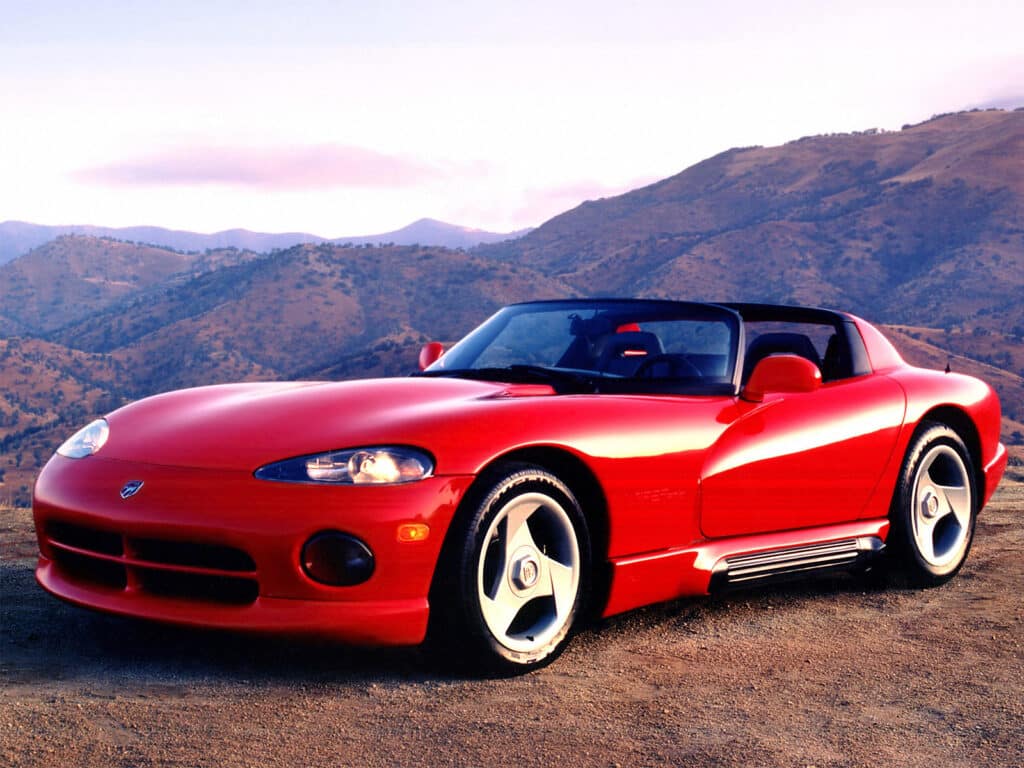
In 1996, following the customers’ complaints, Viper gained ABS, airbags, climate control, and a plastic roof. However, the most significant design changes were moving the exhaust pipes from rocker panels to the rear of the car. Also, the GTS version was introduced. The Viper GTS was a coupe version with a 450 hp engine, better construction, and higher top speed due to better aerodynamics. This was the period when Chrysler decided to introduce a racing spec Viper which proved to be extremely successful and even won the 24 Hours of Le Mans in 1999.
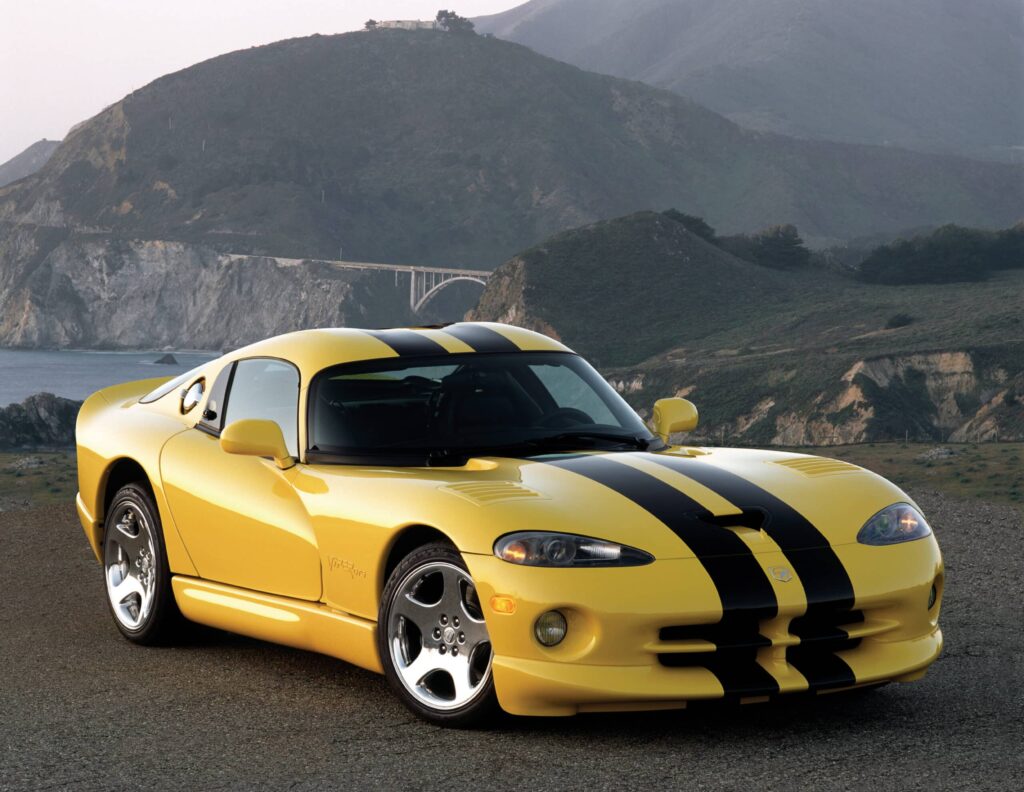
Dodge Viper SRT-10 (2003 to 2010)
The second-generation Viper was introduced in 2003 and was a much improved and far easier car to drive. The evolution of the design was evident, and with more interior comfort and modern features, the Viper lost a bit of that hardcore charm but gained more usability. However, the performance was once again extreme, and the engine grew to 8.3-liter with 500 hp for the roadster version and 510 hp for the cool-looking coupe model.
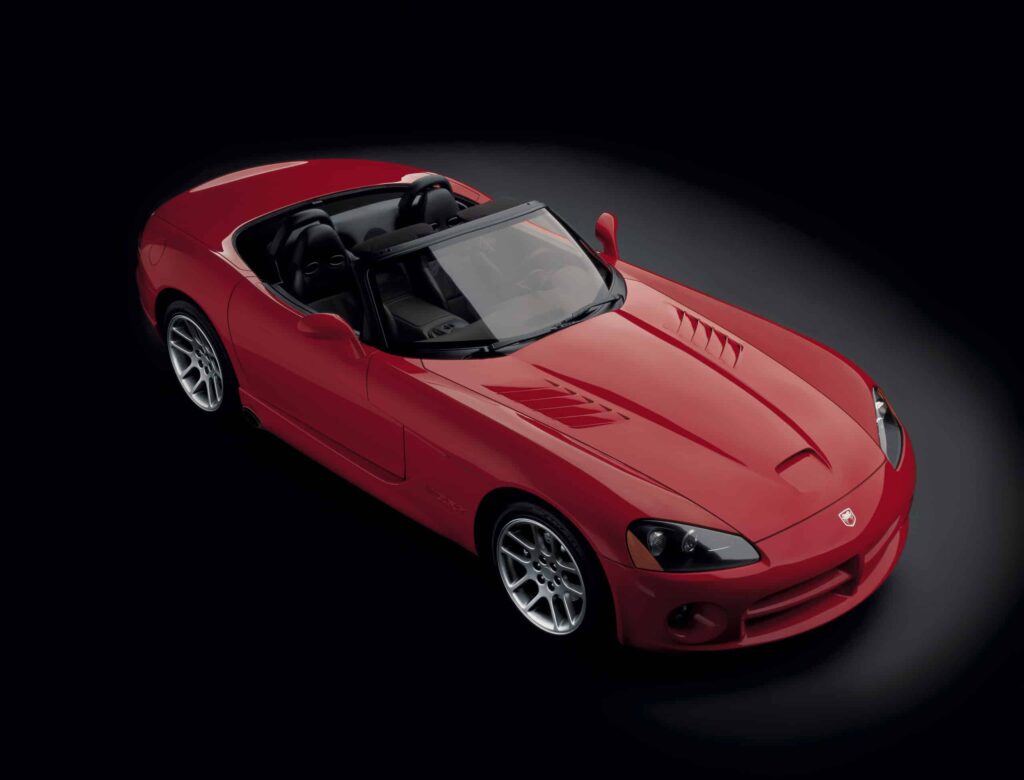
Due to increased performance, the SRT-10 was much faster than RT/10 model and could reach 60 mph in 3.8 seconds with a top speed of 190 mph. Once again, Viper was as fast as the top-of-the-line Ferraris of Porsches but significantly less expensive.
In 2007, the new restyled and improved model was introduced. With 8.4-liter V10 and 600 hp on tap, it pushed the boundaries of performance and driving dynamics. Even though the 0 to 60 mph time wasn’t significantly improved with improved suspension, transmission, and brakes, this version was a riot to drive.
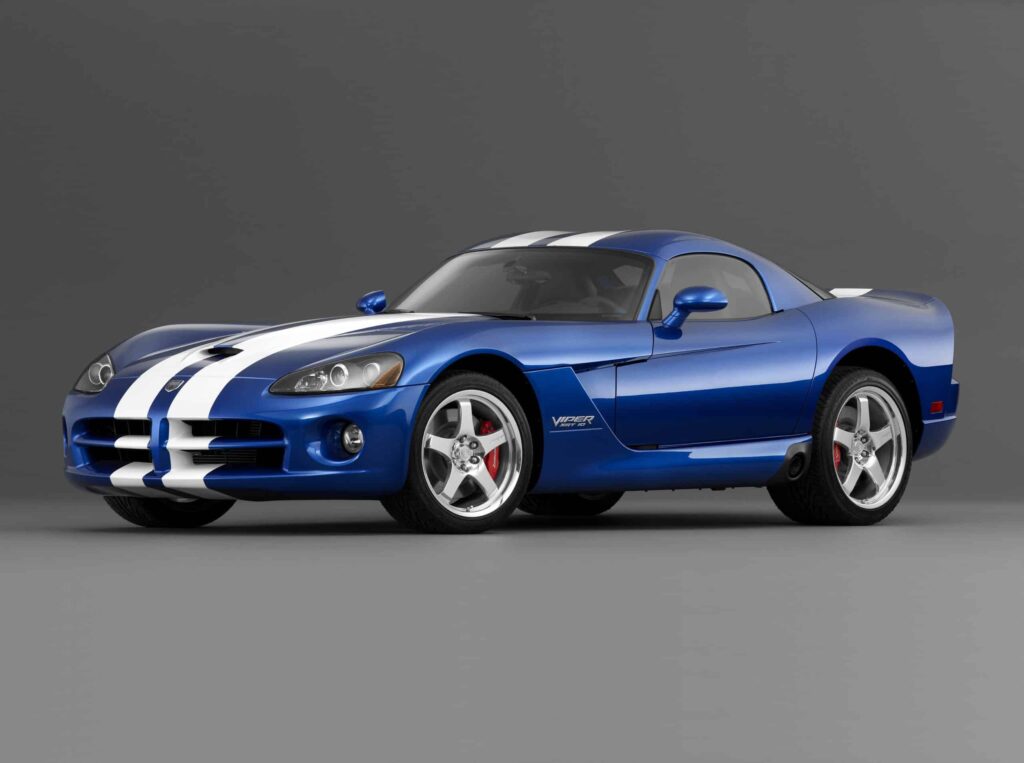
Interestingly, Chrysler decided to offer a very specific model to track-oriented buyers. Called Viper ACR and ACR-X, it was a semi-competition model with the same power output but a much more aggressive design, aerodynamic package, race-spec interior, and more. Immediately, ACR Vipers became the best track day cars for serious driving enthusiasts.

SRT Viper (2013 to 2017)
Unfortunately, due to the dire recession which hit the car industry in 2009, Viper was canceled past the 2010 model year. Even though the sales were steady, production numbers just weren’t enough to justly the further investments. However, after the consolidation and government bailout of Chrysler Corporation, Viper was once again approved by the board, and the car community got the new and final version sold under the name SRT Viper. The SRT was Chrysler’s performance division (Street Racing Technology) which was responsible for design and engineering.

The new model was offered in two trim levels and only one body style – coupe. The SRT Viper was the base model, and GTS was a more upscale version with finer interior appointments and details. However, the drive train was the same and consisted of a famous and incredible 8.4-liter V10 with 650 hp connected to a 6-speed manual. The 0 to 60 mph was achievable in as little as 3.5 seconds, and SRT Viper could top 206 mph, making it again one of the fastest production cars of the era.
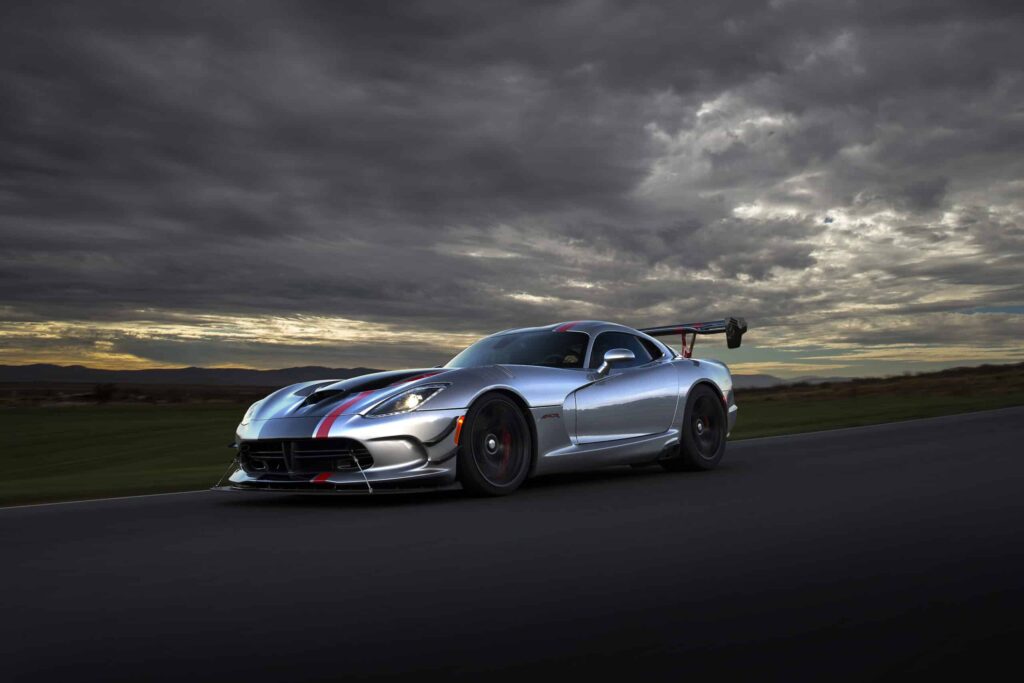
The ACR model was also offered and managed to break several records, including the lap record on Nurburgring, which just shows how sound engineering and aerodynamics were. Again, the ACR Viper had the same performance but thoroughly modified body, suspension, and braking system to provide more track capabilities and stability at extreme speeds. When it was offered for sale, it was quickly sold out, and today, almost six years since this generation was discontinued, ACR Viper is still one of the best cars for track duty you can get. However, even though the Viper was an incredible sports car, Chrysler somehow struggled to find new customers. In 2017, after a few years of poor sales, Chrysler decided to kill the model after over 20 years in production. Despite the fact you cannot get a new Viper, the name is still very much alive amongst the car collectors and sports car enthusiasts. We hope that Chrysler will reconsider this decision in the future, and there will be another Viper soon.



